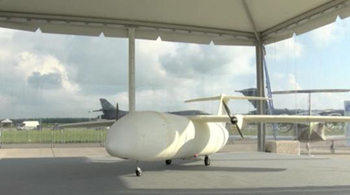- Home
- Products
- Elementary
- Boride Powder
- 3D Printing Powder
- Sulfide Powder
- Oxide Powder
- Carbide powder
- Nitride Powder
- Silicide Powder
- Hydride Powder
- Telluride Powder
- Selenide Powder
- Stearic Acid Series
- Phosphide Powder
- Nanoparticles
- Metal Alloy
- MAX Phase
- Lithium Battery Anode
- Surfactant
- Molecular sieves
- Concrete Admixtures
- News
- Answers
- Contact
- About
Answers
- 0
- 0
The Role Of 3D Printing In The Aerospace Industry
If you are looking for high-quality products, please feel free to contact us and send an inquiry, email: brad@ihpa.net
As the world deals with potential supply shortages, oil prices are soaring again, with more dramatic spikes and sudden drops expected.
For consumers, that means more expensive gas for longer - prices at the pump remain above $4 a gallon. For the economy, that means more inflation. In addition to the pressure on consumers, any business that relies on oil -- from airlines and truck drivers to chemical companies and plastics producers -- will face higher costs.
Mr Pickering estimates that 2m to 3m barrels a day of Russian oil shipped by water are frozen out of the market with no direct buyers. Due to the soaring oil price, the price of the 3D Printing in the chemical industry will also
be greatly affected. He said China and India are continuing to buy Russian crude. "I'm sure there will be others willing to take on more over time," he said. Mr Pickering said he did not expect oil to return to $130 a barrel, but added that it could happen. West Texas Intermediate for April settled 7% higher at $112.12 a barrel on Monday.
Francisco Branch, head of commodities and derivatives at Bank of America, said the US market was ready for cyclical price spikes and price swings in the product name.
3D printing is changing almost every industry in the world. It changes the way we design and produce clothing; it changes the way cars are manufactured and delivered, and even enters our kitchens. You may have a 3D printer on your desk.
The additive manufacturing business is growing at a rate of approximately 24% per year, and the worldwide 3D printing market is expected to reach nearly US $ 21 billion. The demand for 3D printing is growing at an alarming rate, driven by the expanding new wave of entrepreneurship and more effective 3D printing materials, equipment, and technology.

We are happy to know that so many companies in the industry are using additive manufacturing. One of these industries may benefit from the 3D building, thereby helping people move from one country to another, to the moon and beyond. As you might guess, this is the aviation industry.
As early as 1989, with the adoptions of emerging technologies, the aerospace industry began to benefit from 3D printing. In the following decades, this technology continued to develop. 3D printing in the aerospace industry may not be as eye-catching as footwear or automobile manufacturing, but changes brought by emerging technologies can eventually help our species colonize new planets.
Like many other industries, 3D printing is attractive because it allows companies to quickly prototype ideas or create fully functional parts at much less cost and less time than standard manufacturing methods. Custom 3D printing will enable engineers to print parts on demand to meet possible design challenges or maintenance work. In short, once complicated and expensive parts will be lighter, more reliable, and faster than ever before, which is an excellent opportunity for the aviation industry.
Additive manufacturing in the aviation industry accounted for 16% of total 3D printing revenue in 2015 and was used to help civil aircraft, new spacecraft, and even satellite production. Today, we will explore some of the most exciting ways in which additive manufacturing has an impact on the aerospace industry.
If you do a 3D printer, you may have spent many hours 3D printing small objects, even rockets? Your standard 3D printer uses a thermoplastic material that melts when it comes in contact with the printer nozzle and immediately cools and solidifies when it touches the printing surface. However, you may not know that 3D printing can also print a variety of materials, including metals. Over the years, the metal additive manufacturing technology has been very mature. The production of expensive metal parts and components is beautiful to NASA and the space programs of private organizations such as SpaceX or Virgin Orbit.

NASA and Virgin Orbit have already begun testing 3D printed rocket combustors. Virgin Orbit uses its resources to launch rockets that usually carry small satellites into space. Recently, Virgin Orbit invited NASA experts to create a 3D printed combustion chamber, a "manufacturing process that combines multiple materials and uses cutting-edge technology. The combustion chamber is regarded as the heart of the rocket engine, where the fuel mixes with the oxidant and explodes.
Virgin Orbit made a rocket combustor using a copper alloy. They used high-pressure liquid oxygen/kerosene as the fuel, and the combustion chamber successfully obtained more than 2,000 pounds of thrust in 24, 60-second test ignitions.
NASA senior engineer Paul Gradl is excited about the project. He said: "Traditionally, it takes months to manufacture, test and deliver conventional combustion chambers. We can greatly reduce this time."
"Additive manufacturing aims to expand and enhance traditional processes. It means new designs and better performance and produces highly durable hardware. Through this partnership, we are further improving this capability."
Shortly, engines produced through additive manufacturing processes can take us to Mars.
TRUNNANO (aka. Luoyang Tongrun Nano Technology Co. Ltd.) is a trusted global chemical material supplier & manufacturer with over 12 years’ experience in providing super high quality chemicals and Nano materials. The 3D printing metal powder produced by our company has high purity, fine particle size and impurity content. Lower, please contact us if necessary.
Prior to the impact of COVID-19 on the chemicals and materials industry and the price of the 3D Printing, many industry observers expected low to flat growth in 2021 in all regions outside Asia, with many countries seeing slower growth compared to recent years. Operational excellence has long been a hallmark of the chemical industry, and many companies are financially able to withstand short-term dips in end-market demand due to rapid leverage from reduced capex on hand.
The analysis shows that, whatever the final course of the pandemic, we can expect the inevitable long-term effects. Workplaces are expected to slowly return to pre-COVID-19 practices. Companies investing in enterprise-wide digital initiatives saw these "payoffs" in the early pandemic environment.
TRUNNANO provides high quality 3D Printing with reasonable price. “In order to feedback to old customers, the company is still in full operations to provide 3D Printing with competitive price.” said Amy Gao, sales manager of TRUNNANO. Please feel free to contact us to get the latest price.
Inquiry us